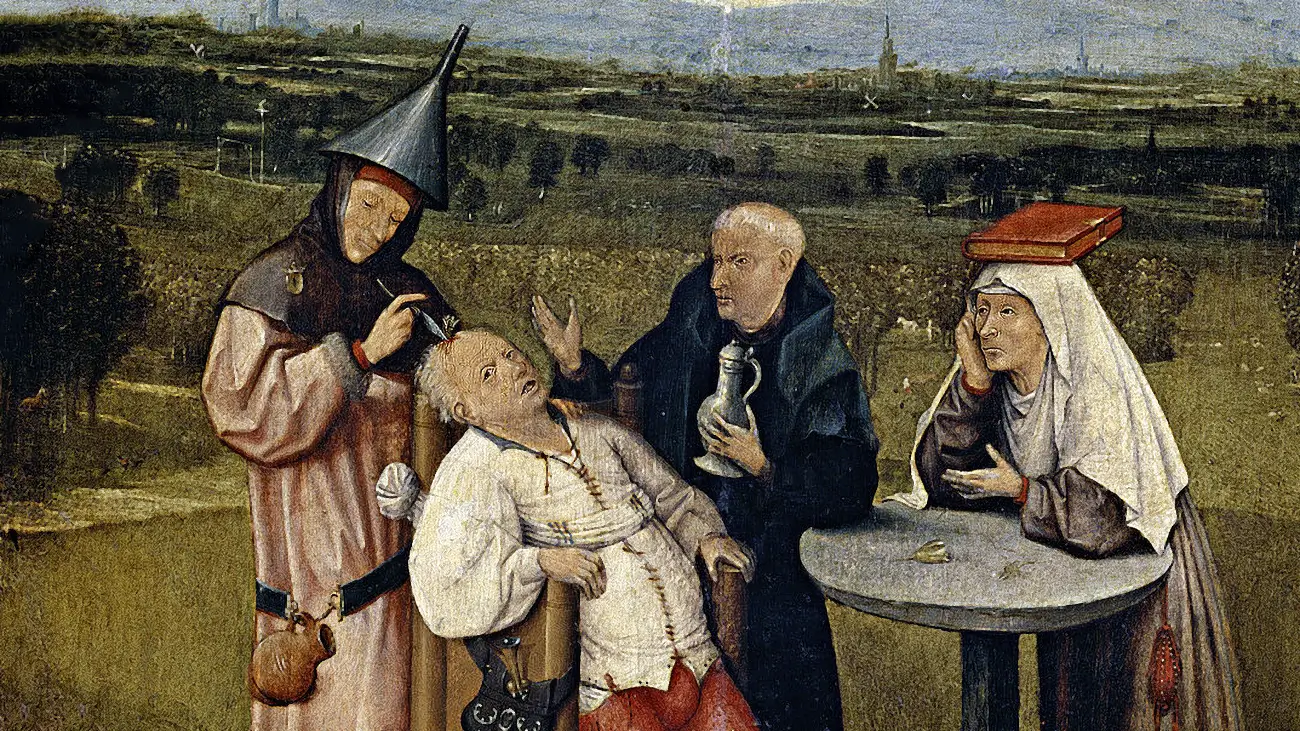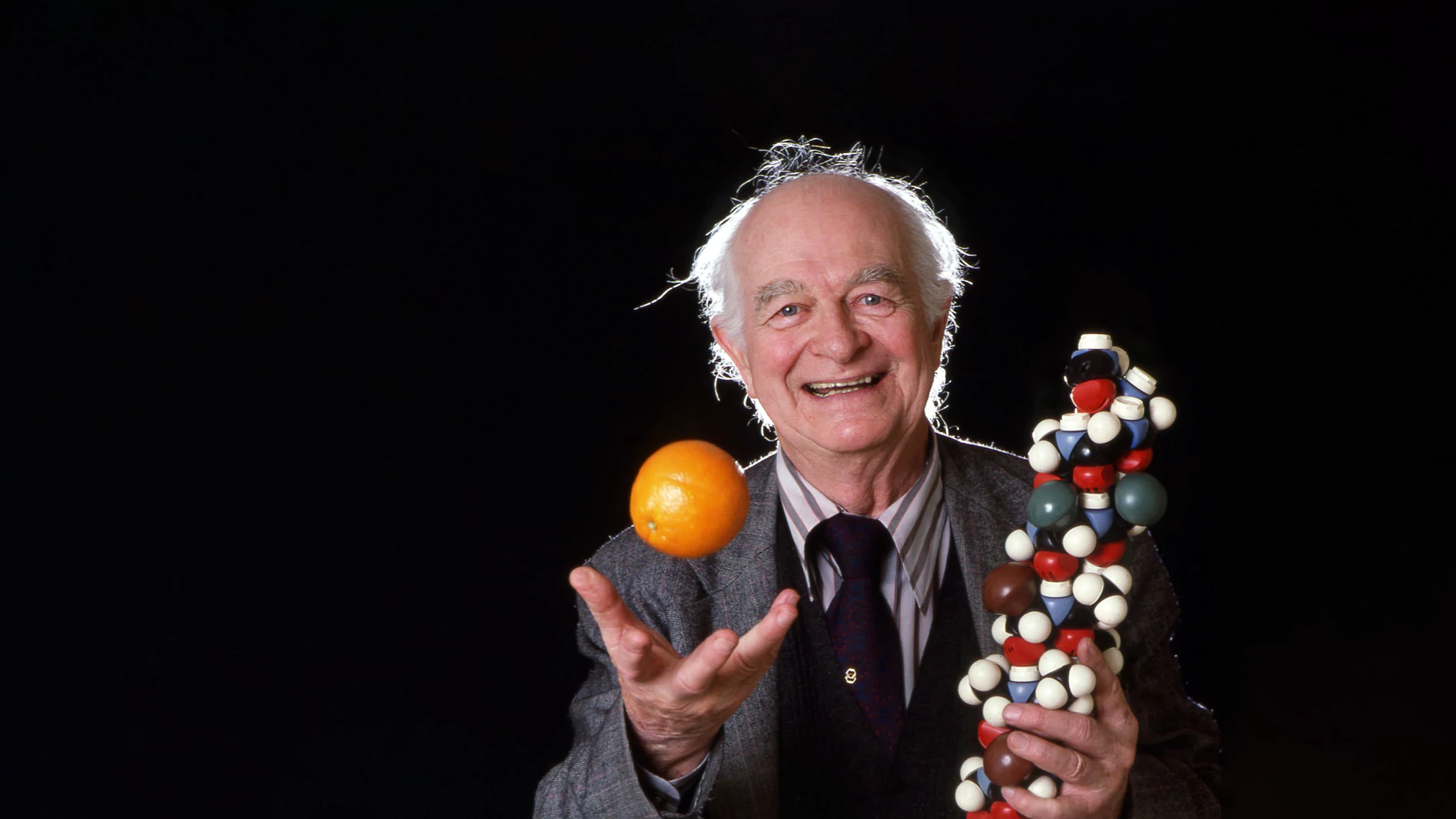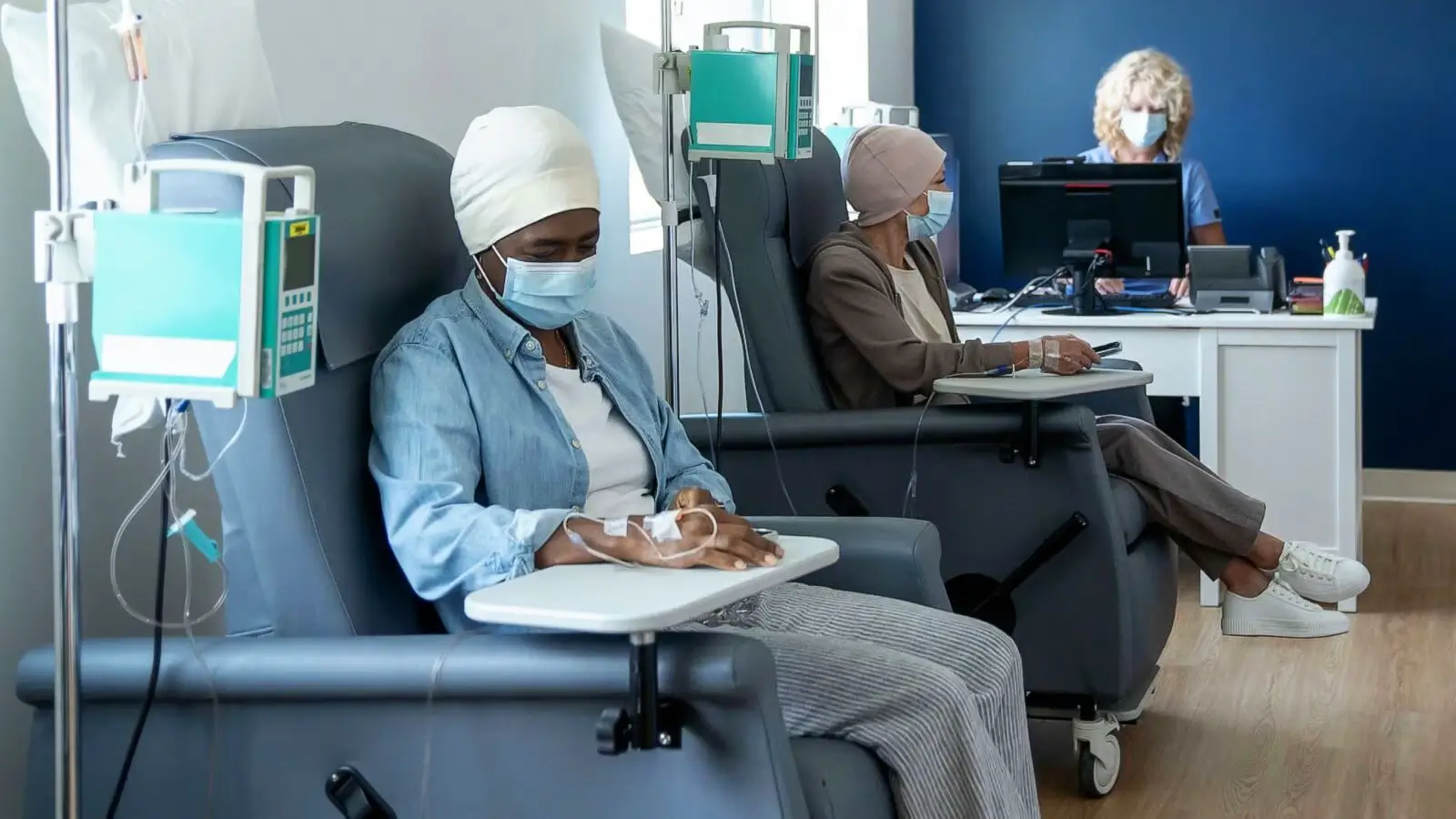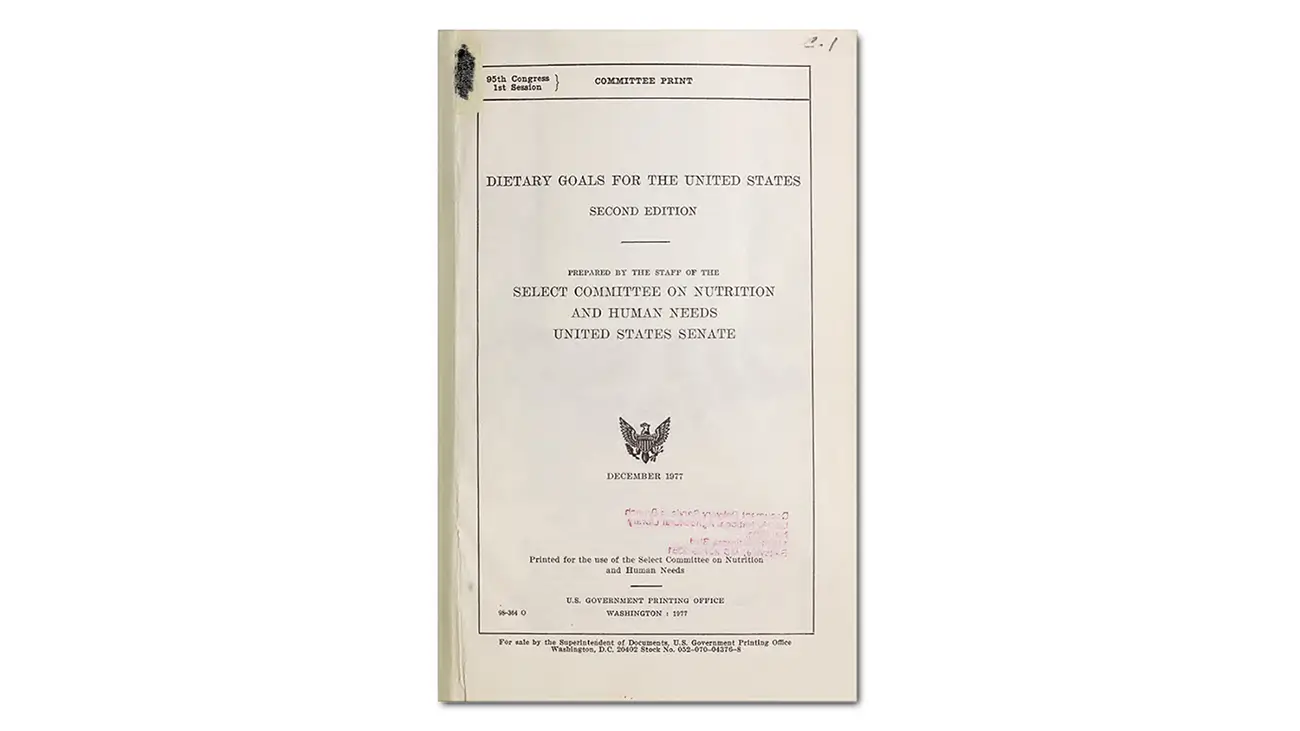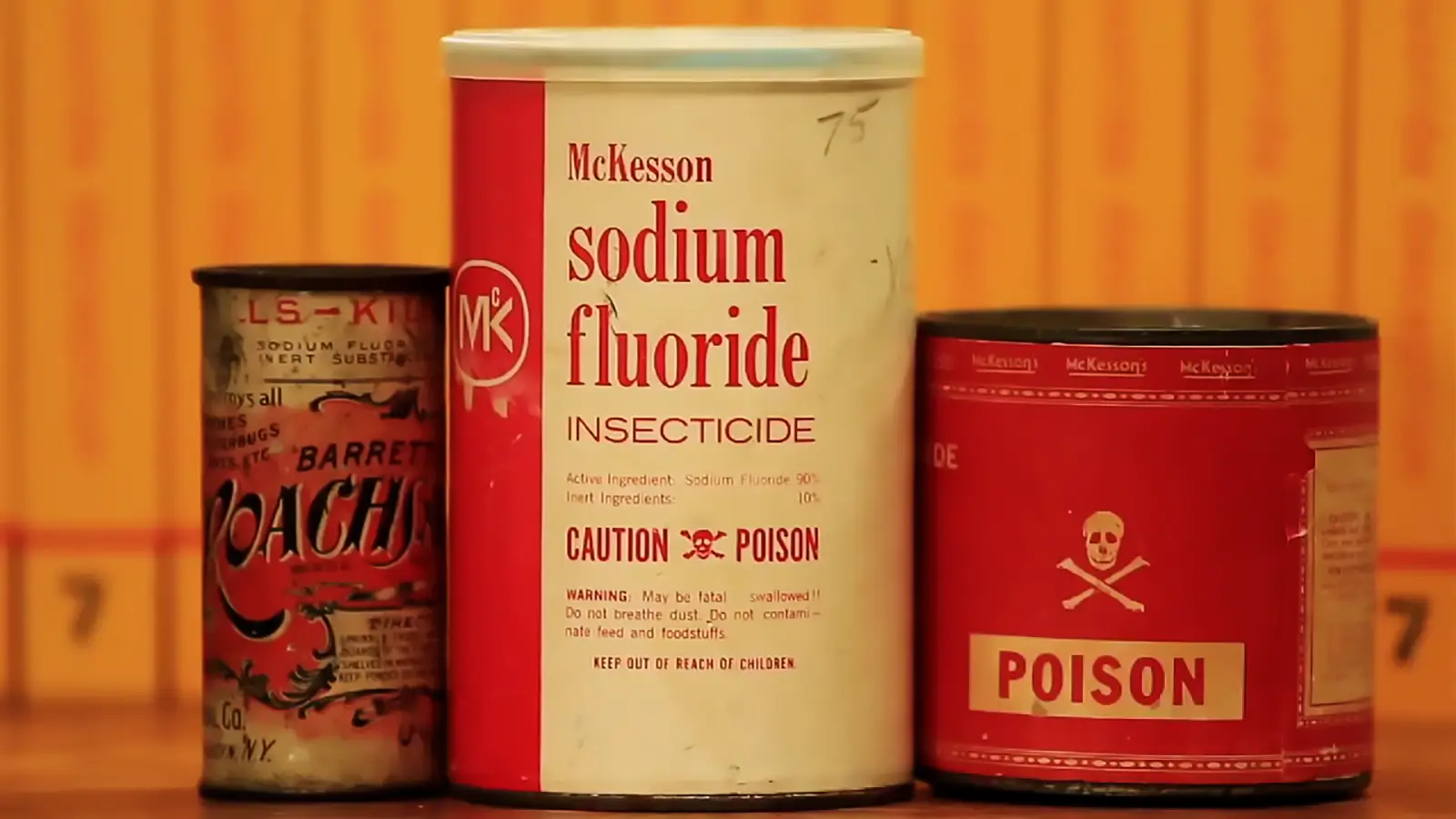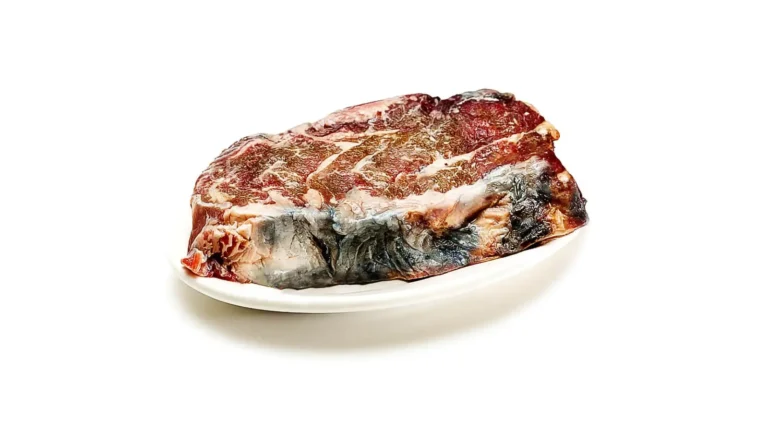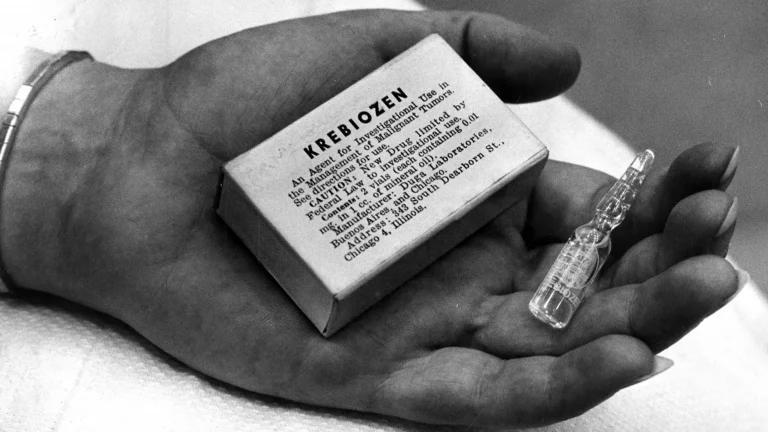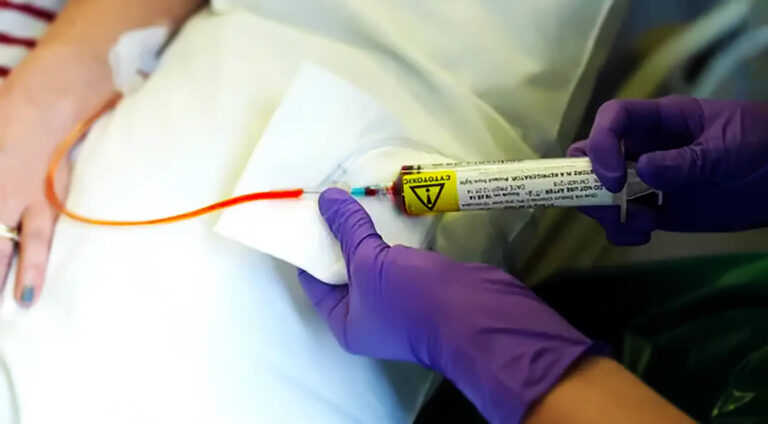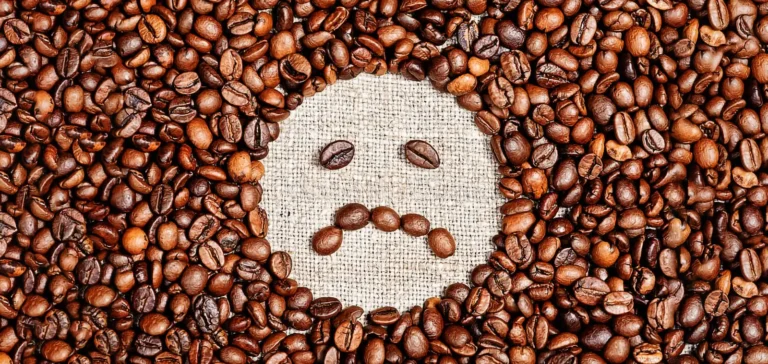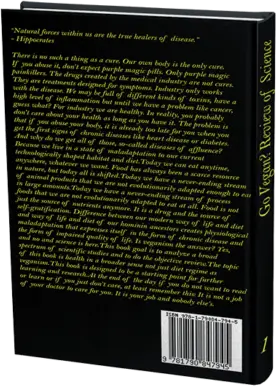El Cáncer, La Prohibida Curas - Krebiozen
Es muy probable que altos cargos influidos por la reputación del Dr. Ivy creyeran que realmente tenía algo en Krebiozen.
Milos Pokimica
Escrito por: Milos Pokimica
Revisado Médicamente Por: Dr. Xiùying Wáng, M.D.
Actualizado el 2 de septiembre de 2023En 1944, un médico refugiado yugoslavo, el Dr. Stevan Durovic, antiguo profesor adjunto de la Universidad de Belgrado, creó el Instituto Biológico Duga en Buenos Aires. Observó que los caballos con tumores en el cuello causados por un hongo solían morir, pero algunos se recuperaban.
Teorizó que los supervivientes debían de tener un sistema inmunitario mejor que producía alguna sustancia que les ayudaba a superar la enfermedad. Experimentó y supuestamente dio con un proceso para extraer esa sustancia. Lo probó supuestamente en perros con gran éxito.
En 1949, un empresario argentino, Loretani, presentó al Dr. Durovic a otros dos hombres de negocios, Ed Moore y Kenneth Brainard, que le propusieron la idea de que Durovic fuera a EE.UU. y se entrevistara con el Dr. Ivy. El Dr. Andrew C. Ivy, era un investigador médico de reputación inexpugnable y talla gigantesca en su profesión. El Dr. Ivy fue vicepresidente de la Universidad de Illinois, director de su enorme Facultad de Medicina, director ejecutivo del Consejo Consultivo Nacional sobre el Cáncer y también fue director de la Sociedad Americana contra el Cáncer. Un hombre importante, respetado, honrado y al que será difícil nombrar como curandero.
Así, en 1949, llevó a Estados Unidos una sustancia llamada Kositerin (no Krebiozen), aparentemente beneficiosa en la terapia de la hipertensión. Se puso en contacto en Chicago, el Dr. Roscoe Miller de la Universidad Northwestern. Pretendía que el Kositerin se probara en pacientes hipertensos. Presumiblemente, la prueba de esa sustancia fue negativa. Más tarde, el Dr. Miller presentó al Dr. Durovic al Dr. Andrew Ivy. Habiendo venido con Kositerin para la hipertensión, el Dr. Durovic casualmente tenía también a su disposición los 2000 mg de material que, según declaró, procedía de la sangre de caballos que habían sido inoculados con Actinomyces bovis y que mostraba buenos resultados en la lucha contra el cáncer.
El Dr. Ivy encontró la idea atractiva. La idea encajaba con sus opiniones sobre las sustancias químicas que deben estar presentes en el organismo para controlar el crecimiento de los tumores. De hecho, el concepto básico de que debe existir un control interno del crecimiento de los tumores por parte del sistema inmunitario es compartido por muchos y ha demostrado ser correcto gracias a la investigación. El sistema inmunitario tiene cierta capacidad para combatir las células cancerosas, y todos tenemos células cancerosas todo el tiempo, sólo que nuestro sistema inmunitario es lo suficientemente bueno como para mantenerlas bajo control. El Dr. Ivy se interesó por la teoría mostrada por la sustancia del Dr. Durovic.
Decidió probarlo de forma científica. Supuestamente, los resultados fueron positivos.

Aunque el Krebiozen sólo se utilizaba en personas que habían sido diagnosticadas como desahuciadas y cercanas a la muerte, y a pesar de las muchas controversias que rodearon el caso, hoy en día no podemos saber qué efecto real tuvo este fármaco, si es que tuvo alguno. Supuestamente se produjo una disminución o desaparición completa del dolor y, en muchos casos, los tumores se disolvieron y fueron sustituidos por tejido sano. El Dr. Ivy testificó en su juicio que sin repetir los experimentos, sin haber oído hablar previamente del Dr. Durovic como científico, sin haber visto análisis o registros de fabricación, o sin saber lo que había en las ampollas, excepto por la palabra del Dr. Durovic, procedió.
Tras inyectarse primero a sí mismo, al Dr. Krasnow y a un perro, y sin que se le ocurriera (según testificó) que la supuesta sustancia X podría ser un engaño, el Dr. Ivy inyectó al primer paciente el 20 de agosto de 1949. Colegas y médicos continuaron el ensayo clínico. En 1951, una vez concluida la investigación, el Dr. Ivy decidió publicar sus hallazgos. Se celebró una conferencia de prensa en el Hotel Drake. Fue una conferencia cerrada a la que fueron invitados los redactores científicos de cuatro periódicos de Chicago, el alcalde de Chicago, dos senadores de los Estados Unidos y posibles colaboradores financieros, además de algunos médicos.
El Dr. Ivy declaró que, tras realizar pruebas en 22 pacientes y ver resultados beneficiosos en el 70%, se iba a celebrar una pequeña reunión privada en el Hotel Drake de Chicago.
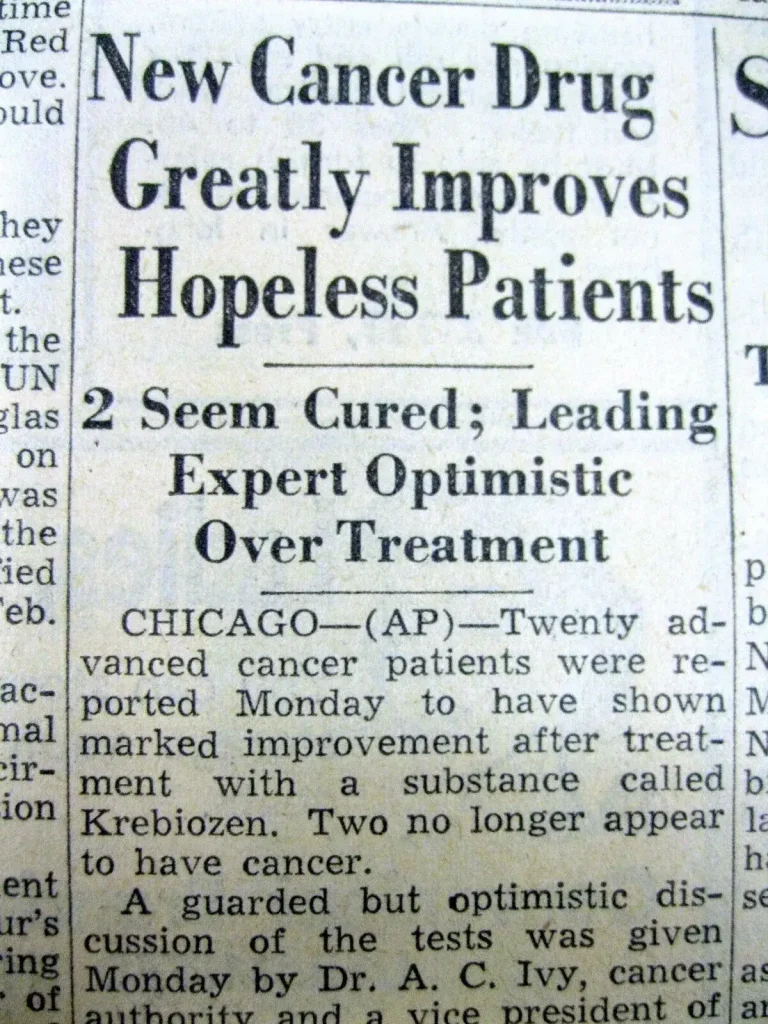
En sus palabras, la idea era encontrar a otros científicos y clínicos que impulsaran la investigación. Se invitó a ochenta especialistas y médicos oncólogos y a cuatro respetados periodistas médicos. Por desgracia, se envió al público un comunicado de prensa sensacionalista y no autorizado en el que se hablaba de pacientes que se habían curado del cáncer. Supuestamente, el Dr. Ivy estaba horrorizado, pero eso no cambiaba el hecho de que se trataba más de una reunión de negocios para una campaña de marketing que de una verdadera reunión científica. Se presentaron los resultados de 22 pacientes. De los 22, ocho habían fallecido, según la tabla de un folleto distribuido en la reunión, pero en ningún caso el cáncer figuraba como causa de la muerte. En cada uno de los ocho casos, sin embargo, como se puso de manifiesto en el ensayo, el paciente murió con y de cáncer.
Además, otros dos de los 22 pacientes habían fallecido, uno siete días y otro dos días antes de la reunión, ambos de cáncer. La descripción resumida seguía siendo la siguiente:
"Mejoría clínica espectacular. Ahora trabaja todo el día sin opiáceos. Había que llevar al paciente en brazos, no podía andar".
Durante los años siguientes, hubo muchos pacientes tratados con Krebiozen. En el informe sobre Krebiozen, el 79,5% de los médicos que probaron Krebiozen se desanimaron después de un solo paciente: sólo trataron a uno. El 92% no trató a más de dos pacientes. Sin embargo, la Fundación para la Investigación del Krebiozen afirmó una mejoría objetiva con una disminución del tamaño del tumor en el 61% de los tumores del cerebro y de la médula espinal, en el 70% de las metástasis cerebrales, en el 48% de los cánceres de mama. Tres casos bastarán más adelante para indicar la flagrante insuficiencia de la evaluación crítica de los historiales de los pacientes por parte de la Krebiozen Research Foundation, pero a fin de cuentas, esta sustancia no es relevante en absoluto.

Lo importante es comprender el sistema y por eso utilizo esta historia como ejemplo.
Con una mercancía como la cura del cáncer, a las consideraciones humanitarias se unen el poder, la influencia y el control.
Es muy probable que los poderes de las altas esferas, influidos por la reputación del Dr. Ivy, creyeran que realmente tenía algo en Krebiozen y, asustados por su interés, decidieran actuar.
Por ello, dos empresarios de Chicago intentaron hacerse con el control de los derechos de distribución de Krebiozen. Igual que Essiac igual que cualquier otra historia. Ofrecen un soborno, si no, se acabó. Cuando se negaron, amenazaron con arruinar a Krebiozen y a todos los relacionados con él. Uno de los hombres que hizo esta amenaza era el amigo de J. J. Moore, el tesorero de la Asociación Médica Americana.
Incluso en febrero de 1950 Moore y Brainard ya exigían los derechos de distribución del medicamento, pero el Dr. Durovic consideró que no era apropiado debido a su falta de experiencia en este campo y se les ofreció un canon o una asociación, pero al parecer rechazaron todas las alternativas. Funcionarios de la AMA, el Dr. Wermer y el Dr. Moore visitaron al Dr. Durovic. En un momento dado le dijeron:
"¿No crees que tienes una obligación con Moore y Brainard por los derechos de distribución de Krebiozen? Debes dar los derechos de distribución a Moore y Brainard".
Todo esto se escribió en un testimonio jurado un año más tarde, y usted puede hacer su propia investigación. El testimonio todavía está disponible públicamente. Más tarde, en 1951, Loretani, que era un hombre de negocios de Argentina, se reunió de nuevo con los Durovic. Dejó perfectamente claro que:
" Si no conseguían lo que pedían, su poderoso amigo el Dr. Moore se encargaría de que ellos, la Dra. Ivy y su descubrimiento Krebiozen fueran totalmente destruidos".
Loretani le dijo a Durovic que Ed Moore tenía un buen contacto en la Universidad de Illinois que haría un informe desfavorable sobre Krebiozen. Estaban dispuestos a entregar 2,5 millones de dólares y entonces cesarían todos los ataques. En una reunión entre Pick y Wermer, Pick testificó que le dijeron:
"Es una pena que un hombre de su calibre tenga que hundirse con el barco, pero así tiene que ser".
En octubre de 1951, el estudio de la AMA sobre Krebiozen se redactó en sólo seis semanas. Normalmente, se necesitan dos años o más para un estudio de este tipo. Se realizó en 100 pacientes de los cuales 98 no mostraron ninguna evidencia de mejoría. Unas semanas más tarde el Dr. Ivy fue juzgado por el Comité Ejecutivo de la Sociedad Médica de Chicago por quebrantar la ética médica y fue suspendido. Esto le obligó a dimitir de todos sus cargos médicos.
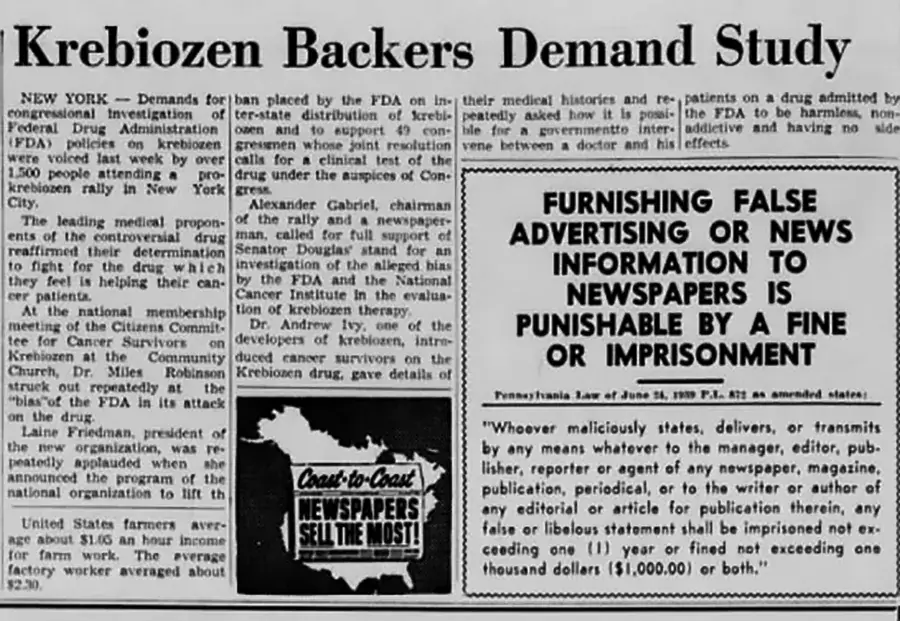
Poco después, el Consejo Nacional de Investigación redactó una carta publicada en el AMA Journal en la que se afirmaba que no existía "ninguna prueba de efecto paliativo" atribuible al Krebiozen. Hasta aquí todo bien y esta historia ya estaría olvidada.
Sin embargo, el comodoro Barreira, que se había ocupado del laboratorio del Dr. Durovic en Buenos Aires, se mostró escéptico ante el informe negativo de la AMA.
Hizo un plan.
Él y su secretaria consiguieron una reunión con el Dr. J.J. Moore, el agente de la AMA. El plan consistía en que Barreira fingiera haber tenido una discusión con el Dr. Durovic y poseyera documentos que le incriminaran.
La conspiración fue descubierta al más alto nivel de la AMA, y con esta prueba, Barreira influyó en el poder legislativo de Illinois para que procediera a la investigación. que procediera a la investigación. Las audiencias se abrieron en abril de 1953. El comodoro Barreira presento declaraciones juradas y testimonios.
Entonces, los conspiradores detrás de la AMA como propietarios legítimos de Krebiozen compartirían los millones que valía el medicamento. El Dr. Moore dijo además que el Dr. Ivy seguía siendo poco razonable en la defensa de Krebiozen. Los conspiradores habían hecho que lo expulsaran de la Sociedad Médica de Chicago, y van a hacer que lo echen de su consultorio en la Universidad de Illinois.
El Sr. Barreira tenía ahora pruebas de toda la corrupción y conspiración.
La conspiración se descubrió al más alto nivel de la AMA y, con esta prueba, Barreira influyó en la legislatura de Illinois para que procediera a la investigación. Las audiencias se abrieron en abril de 1953. El comodoro Barreira prestó declaración jurada y testimonio.
La AMA durante la investigación y después nunca ha negado la actuación de su Tesorero. Lo mismo hizo el propio Dr. Moore.
Vuelva a leer esta frase.
La AMA nunca ha negado la actuación de su Tesorero ni tampoco lo hizo el propio Dr. Moore.
Quieres pruebas de un estado profundo.
Aquí lo tienes.
El Dr. Ivy destrozó el Informe de Situación de la AMA, utilizando palabras como engaño, falsificación, engaño, falta de ética y falsedad. Las audiencias terminaron casi un año después. Informaron de que la investigación del Dr. Ivy se había llevado a cabo de acuerdo con las normas científicas necesarias.
Nunca se formularon cargos de conspiración contra el Dr. Moore porque su cometido sólo se refería a los tejemanejes de la Universidad.
Vuelve a leer esto.
¡Los legisladores nunca lo hicieron!
¡Cero!
¡nunca!
¡cargos de conspiración!
¡contra el Dr. Moore!
¡¡¡¡porque sus competencias sólo se refieren a lo que ocurre en la Universidad y eso es mentira.!!!!
No lo hicieron porque eso probaría la conspiración criminal a nivel del gobierno americano involucrando a todo un sistema médico de los EEUU. ¡¡¡¡¡¡¡!!!!!!!
Desafortunadamente, las Audiencias no parecieron cambiar nada. Después, excepto ir a la cárcel, votaron al Dr. Moore de nuevo como Tesorero.
El Instituto Nacional del Cáncer se negó a examinar a Krebiozen. No se renovó el puesto del Dr. Ivy como Vicepresidente de la Universidad de Illinois. Todas las revistas médicas y de otro tipo rechazaron escribir sus trabajos de investigación. La comunidad estaba muy entusiasmada con Krebiozen, y las personas que conocían el medicamento a veces pedían a sus médicos que lo utilizaran. Sin embargo, todos los estudios muestran que no tenía ningún efecto positivo y hubo informes de hospitales que lo probaron y que no servía para nada. Un médico del Sloan Kettering Memorial Hospital de Nueva York incluso escribió en una carta que: "lo probamos en 100 pacientes".
El único problema es que más tarde se descubrió que era mentira. Algunos médicos también informaron de que sus pacientes habían muerto después de usar Krebiozen. La FDA supuestamente hizo su propia investigación, y el hallazgo fue que Krebiozen era sólo creatina, y luego anunció planes para procesar al Dr. Ivy y al Dr. Durovic.
De nuevo, el único problema fue que en un juicio real posterior, los expertos de la FDA admitieron que estaban "equivocados".
Hoy en día en cualquier sitio oficial encontraríamos que Krebiozen era sólo creatina, pero de nuevo se demostró que era un "error".
En este caso, se puede ver el alcance de la corrupción. No fue un error fue un esfuerzo organizado para ganar o mantener el control de la industria médica. Cuando los expertos de la FDA admitieron, se equivocaron en esa parte de la frase que no se lee en Wikipedia.
Esa parte se ha olvidado.
Aquí está la "historia" real que están empujando en el sitio web de la FDA hasta el día de hoy con la imagen de la creatina que se demostró que era un "error" en las audiencias judiciales, https://www.fda.gov/about-fda/fda-history-exhibits/alma-levant-haydens-contributions-regulatory-science
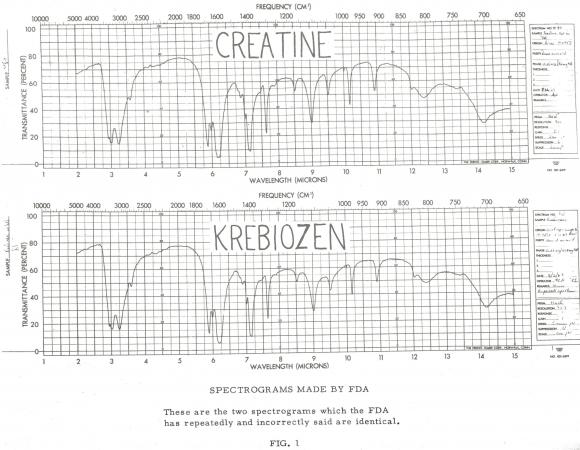
Si le parece imposible que un "distinguido" centro oncológico mienta, recuerde que Sloan Kettering fue pillado in fraganti mintiendo sobre otra terapia contra el cáncer, el Laetrile, y fue desenmascarado por uno de sus propios empleados, el Dr. Ralph Moss, que no quiso participar en el fraude.
Los detalles de la correspondencia entre tres especialistas en cáncer del Sloan-Kettering y la Sra. Dorothea Seeber en nombre de una amiga en las últimas fases del cáncer son un ejemplo típico. Los médicos del Sloan-Kettering y su opinión sobre el Krebiozen pueden verse en una carta enviada a personas que preguntan por él y si sería aconsejable utilizarlo en un "caso desesperado".
"Lo probamos (Krebiozen) en 100 pacientes, y lamento decir que no pudimos corroborar ninguna de las afirmaciones atribuidas a su uso".
"Sólo he tenido unos pocos pacientes a los que se les ha probado el Krebiozen, y no hubo mejoría en su estado".
Un tercero escribió:
"Se ha realizado un trabajo considerable sobre este fármaco y hemos descubierto que no tiene ningún valor".
Una declaración jurada del Dr. Ivy cuenta una historia diferente en la que se puede leer bajo juramento que él nunca proporcionó ni que estos tres médicos recibieron jamás ninguno de los fármacos. Hasta la fecha de la declaración jurada, nunca se había enviado una sola ampolla de Krebiozen al Instituto Sloan-Kettering. Las nuevas leyes de la FDA entraron en vigor en junio de 1963, lo que significaba que el Krebiozen no podía enviarse fuera de las fronteras estatales sin la aprobación de la FDA y, por supuesto, no tenían intención de concederla nunca. Así pues, la sustancia sólo pudo comprarse en Illinois hasta 1973, año en que se prohibió también en este estado.
Los tratos que salen a la luz pública asociados a esta historia son de proporciones dramáticas.
Hay informes médicos falsificados, agentes encubiertos sudamericanos, amenazas de deportación, llamadas telefónicas vigiladas y acusaciones de influencia por parte del Vaticano.
Para ilustrarlo, un reportero del New York Post llamó a la A.M.A. para obtener respuestas concretas a preguntas específicas, como:
"¿Niega J. J. Moore haber formado una conspiración para obtener el control de Krebiozen?"
También:
"¿Niega la A.M.A. que su informe oficial contra Krebiozen fuera falsificado?"
y la única respuesta fue la siguiente:
"La A.M.A. no responderá preguntas específicas sobre Krebiozen".
El comentario del periodista fue:
"Suena un poco como si la A.M.A. se acogiera a la Quinta Enmienda".
Krebiozen no era más que otro tratamiento no probado y probablemente ineficaz, pero eso es irrelevante. A los poderes fácticos no les importaba y lo veían como una amenaza más a su control. Es completamente irrelevante qué era ese medicamento o si era eficaz. Este caso ha demostrado en el tribunal de justicia y también en las audiencias del Congreso la verdadera naturaleza de la realidad corrupta médica y gubernamental, y si usted no quiere verlo, entonces esa es su elección.
Si ha leído mucho sobre tratamientos alternativos contra el cáncer, sabrá que hay un gran número de terapias con historias similares a ésta. Y eso son sólo las que conocemos.
¿Qué habría pasado si hubieran decidido aceptar los 2,5 millones?
Eran codiciosos como cualquier otro médico y pensaban que podrían sacar mucho más, pero subestimaron y probablemente no comprendieron el nivel de corrupción.
El curanderismo del cáncer es lucrativo. El Dr. Stevan Durovic estaba acusado de evasión del impuesto sobre la renta por un importe de $904.907 sólo por los años 1960, 1961 y 1962. Los investigadores del Gobierno habían demostrado en su juicio que se retiraron grandes sumas de dinero de las cuentas bancarias del Laboratorio Promak, dinero procedente de la venta de Krebiozen y enviado a bancos canadienses y suizos. Sin embargo, el Dr. Durovic consiguió salir. O se lo permitieron. Dijo a un periodista de Chicago que había volado sin escalas de Chicago a Londres y luego viajó a París. Sin embargo, agentes de Hacienda dijeron a un corresponsal de Washington que Durovic había volado de Miami a Bimini, en las Bahamas, de Bimini a Nassau, de Nassau a Bermudas, y de Bermudas a Londres y de Londres a París. Uno de los abogados de Durovic ha presentado incluso una demanda reclamando $11.787 en concepto de honorarios legales impagados.
El problema aquí es cuántas otras personas encontraron algo similar que realmente funcionaba contra el cáncer, pero decidieron aceptar el soborno y marcharse pacíficamente.
Es una elección racional.
Yo diría que nueve de cada diez. Por cada Krebiozen que conocemos, hay otros nueve que están suprimidos.

Referencias:
Pasajes seleccionados de un libro: Pokimica, Milos. Go Vegan? Examen de Ciencias de la Parte 2. Kindle ed., Amazon, 2018.
Contenidos Relacionados
¿Tienes alguna duda acerca de la nutrición y la salud?
Me encantaría saber de usted y responderlas en mi próxima publicación. Agradezco sus aportes y opiniones y espero tener noticias suyas pronto. También te invito a síguenos en Facebook, Instagram y Pinterest para más contenidos sobre dieta, nutrición y salud. Puedes dejar un comentario allí y conectar con otros entusiastas de la salud, compartir tus consejos y experiencias, y recibir apoyo y ánimo de nuestro equipo y nuestra comunidad.
Espero que este post le haya resultado informativo y ameno y que esté preparado para aplicar los conocimientos adquiridos. Si le ha resultado útil, por favor compártelo con tus amigos y familiares que también podrían beneficiarse de ella. Nunca se sabe quién puede necesitar orientación y apoyo en su camino hacia la salud.
– También Te Puede Interesar –

Aprenda Sobre Nutricion
Milos Pokimica es doctor en medicina natural, nutricionista clínico, escritor sobre salud médica y nutrición y asesor en ciencias de la nutrición. Autor de la serie de libros Go Vegan? Revisión de la Ciencia, también dirige el sitio web sobre salud natural GoVeganWay.com.
Descargo De Responsabilidad Médica
GoVeganWay.com le ofrece reseñas de las últimas investigaciones relacionadas con la nutrición y la salud. La información proporcionada representa la opinión personal del autor y no pretende ni implica sustituir el asesoramiento, diagnóstico o tratamiento médico profesional. La información proporcionada tiene fines informativos únicamente y no pretende sustituir la consulta, el diagnóstico y/o el tratamiento médico de un médico o proveedor de atención médica calificado.NUNCA ignore el CONSEJO MÉDICO PROFESIONAL O RETRASAR la BÚSQUEDA de TRATAMIENTO MÉDICO a CAUSA DE ALGO QUE HAYA LEÍDO EN O accesibles a TRAVÉS de GoVeganWay.com
NUNCA APLICAR CUALQUIER cambio de ESTILO de vida O CAMBIOS EN su totalidad COMO UNA CONSECUENCIA DE ALGO QUE HA LEÍDO EN GoVeganWay.com ANTES de CONSULTAR con LICENCIA PROFESIONAL MÉDICO.
En el caso de una emergencia médica, llame a un médico o al 911 inmediatamente. GoVeganWay.com no se recomienda ni aprueba ninguna de los grupos, las organizaciones, las pruebas, los médicos, productos, procedimientos, opiniones u otra información que pueda ser mencionado en el interior.
Selecciones del editor –
Milos Pokimica es escritor especializado en salud y nutrición y asesor en ciencias nutricionales. Autor de la serie de libros Go Vegan? Revisión de la Ciencia, también dirige el sitio web sobre salud natural GoVeganWay.com.
Últimos artículos -
Top Noticias De Salud — ScienceDaily
- Why consciousness exists at allen diciembre 15, 2025
Consciousness evolved in stages, starting with basic survival responses like pain and alarm, then expanding into focused awareness and self-reflection. These layers help organisms avoid danger, learn from the environment, and coordinate socially. Surprisingly, birds show many of these same traits, from subjective perception to basic self-awareness. This suggests consciousness is far older and more widespread than once believed.
- AI found a way to stop a virus before it enters cellsen diciembre 15, 2025
Researchers discovered a hidden molecular “switch” that herpes viruses rely on to invade cells. By combining AI, simulations, and lab experiments, they identified and altered a single amino acid that shut down viral entry. What once might have taken years was achieved far faster using computational tools. The findings open new possibilities for designing future antiviral treatments.
- New study shows some plant-based diets may raise heart disease risken diciembre 15, 2025
Researchers tracking over 63,000 adults found that high-quality, minimally processed plant foods significantly reduce cardiovascular risk. But when those plant foods are ultra-processed, the advantage disappears—and can even backfire. Some ultra-processed plant diets increased risk by 40%. The study urges a shift toward whole, naturally nutrient-rich plant foods.
- These simple habits could make your brain 8 years younger, study findsen diciembre 15, 2025
New research shows that your brain’s “true age” can shift dramatically depending on how you live, with optimism, restorative sleep, stress management, and strong social support acting like powerful anti-aging tools. Using advanced MRI-based brain-age estimates, scientists found that people with multiple healthy lifestyle factors had brains up to eight years younger than expected — even among those living with chronic pain.
- Anxiety and insomnia linked to sharp drops in key immune cellsen diciembre 15, 2025
Natural killer cells act as the immune system’s rapid-response team, but the stress of anxiety and insomnia may be quietly thinning their ranks. A study of young women in Saudi Arabia found that both conditions were linked to significantly fewer NK cells—especially the circulating types responsible for destroying infected or abnormal cells. As anxiety severity increased, NK cell levels dropped even further, suggesting a stress-driven weakening of immune defenses.
- Cannabis compounds show unexpected power against ovarian canceren diciembre 15, 2025
Scientists have discovered that key compounds from cannabis—CBD and THC—show surprisingly strong effects against ovarian cancer cells. Used together, they slow cell growth, reduce colony formation, and may even block the cancer’s ability to spread. Even more promising, the treatment caused minimal harm to healthy cells and appears to work by restoring a disrupted signaling pathway that fuels tumor growth.
- Mayo Clinic neurosurgeon reveals 8 back pain myths to stop believingen diciembre 15, 2025
Back pain is wrapped in persistent myths, but many are far from the truth. From misconceptions about heavy lifting and bed rest to confusion over posture, exercise, and surgery, Dr. Meghan Murphy breaks down what really causes pain and what actually helps. Her insights reveal that everyday habits, movement, and smart prevention often make a bigger difference than people realize.
PubMed, #Dieta vegana –
- Healthful and Unhealthful Plant-Based Diets and Their Association with Cardiometabolic Targets in Women Diagnosed with Breast Cancer: A Cross-Sectional Analysis of a Lifestyle Trialen diciembre 11, 2025
CONCLUSIONS: Maintaining cardiometabolic risk factors within normal ranges is clinically relevant in BCS, and this may be more likely when a plant-based diet is consumed, especially if low in unhealthy plant foods.
- Dietary and Lifestyle Patterns and Their Associations with Cardiovascular and Inflammatory Biomarkers in Vegans, Vegetarians, Pescatarians, and Omnivores: A Cross-Sectional Studyen diciembre 11, 2025
Background: Plant-based diets are associated with reduced cardiometabolic risk, yet the influence of lifestyle behaviors on these benefits remains insufficiently understood. Objective: To assess the combined impact of dietary patterns and lifestyle behaviors on body composition, lipid profiles, and inflammatory biomarkers in healthy young adults. Methods: In this cross-sectional study, 155 participants aged 18-39 years were categorized into four dietary groups: vegans (n = 48), vegetarians (n […]
- Functional and Nutritional Properties of Lion’s Mane Mushrooms in Oat-Based Desserts for Dysphagia and Healthy Ageingen diciembre 11, 2025
Hericium erinaceus (Lion’s Mane mushroom) is a medicinal species recognised for its neuroprotective and antioxidant properties. This study investigated its potential as a functional ingredient in oat milk-based desserts formulated for individuals with dysphagia. Freeze-dried Lion’s Mane powder (LMP), containing high-quality protein (~16%, amino acid score 88%), dietary fibre (~31%), and phenolic compounds (72.15 mg GAE/g), was incorporated at varying levels using gelatin or iota-carrageenan […]
- “A football team with no midfield”: A qualitative analysis of anti-vegan stigma in Italyen diciembre 7, 2025
A growing body of research has demonstrated the prevalence of unfavourable attitudes towards individuals who adhere to a vegan diet and has provided empirical evidence to support the existence of an anti-vegan ideology. The present study aims to contribute to extant knowledge by examining the social perception of veganism and vegans in Italy. Italy is a nation characterised by a traditional culture of food that serves as a significant catalyst for collective identification and national pride….
- Plant-based dietary index on the Mediterranean and a vegan diet: a secondary analysis of a randomized, cross-over trialen diciembre 5, 2025
CONCLUSION: These findings suggest that, replacing animal products even with the “unhealthful” plant-based foods on a vegan diet was associated with weight loss.
Publicaciones aleatorias –
Publicaciones destacadas -
La última versión desde PubMed, #Dieta basada en plantas –
- Identification of effective plant-based oils for use in aquafeed: An evaluation of impact on gamete quality and developmental success using zebrafish (Danio rerio) as a screening organismpor Seyed-Mohammadreza Samaee en diciembre 14, 2025
To evaluate the effectiveness of zebrafish as a screening system for identifying appropriate plant oils (POs) for aquafeed, Artemia nauplii (AN) were enriched with three single- cultivar olive oils (OO): Koroneiki, Parseh, and Arghavan. The resulting AN (ANKor, ANPar, ANArg, and AN36 [36 h starved AN, control]) were then fed to 360 fish (3.5 cm) for one month. The fatty acid (FA) profile of the AN was reflected in the ova and influenced both sperm motility and density, which in turn affected […]
- The Effect of Dietary Interventions on Human Vascular Function in the Context of Acute Psychological Stress: A Scoping Reviewpor Rosalind Baynham en diciembre 14, 2025
Episodes of acute psychological stress increase the risk for cardiovascular diseases, partially through stress-induced impairments in vascular function. During psychologically stressful periods, individuals are more likely to consume unhealthy foods and fewer fruits and vegetables. Yet, the impact of dietary choices and their nutritional composition on vascular function in the context of psychological stress is unclear. In this scoping review, comprehensive database searches were carried out […]
- Plant-based diets, gut microbiota, blood metabolome, and risk of colorectal, liver and pancreatic cancers: results from a large prospective cohort study of predominantly low-income Americanspor Fangcheng Yuan en diciembre 14, 2025
CONCLUSIONS: A diet high in healthy plant foods and low in animal foods was inversely associated with liver cancer risk and with CRC risk among screening-naïve participants. These associations may be partly mediated through gut microbiota and systemic metabolism.
- Vegetarian diet and likelihood of becoming centenarians in Chinese adults aged 80 years or older: a nested case-control studypor Yaqi Li en diciembre 14, 2025
CONCLUSIONS: Targeting individuals of advanced age (80+ years) in China, we found that individuals following vegetarian diet had lower likelihood of becoming centenarians relative to omnivores, underscoring the importance of a balanced high-quality diet with animal- and plant-derived food composition for exceptional longevity, especially in the underweight oldest-old.
- Priority of nutrition and exercise in depression management: triangulating mini-review of past and recent evidence with clinical practice guidelinespor Shannon Rogers en diciembre 14, 2025
CONCLUSIONS: Disparities that exist in leading depression management guidelines vis-à-vis inclusion of evidence-informed nutrition and PA/PE recommendations, warrant reconciliation. Evidence supporting anti-depressant WFPB nutrition and limiting pro-inflammatory animal-sourced food and UPF and supporting anti-inflammatory aerobic exercise and resistance training warrants being translated into national/international depression management guidelines as consistently as recommendations for…
- The effect of a diet based on vegetable and dairy protein on biochemical and functional indicators of sarcopenia in patients with liver cirrhosis: a randomized controlled trialpor Mahdiyeh Taghizadeh en diciembre 13, 2025
CONCLUSIONS: In conclusion, a vegetable and dairy protein-based diet effectively inhibited significant elevations in ammonia levels compared to the standard diet in persons with liver cirrhosis; however, anthropometric parameters and muscle function did not differ between two groups.

